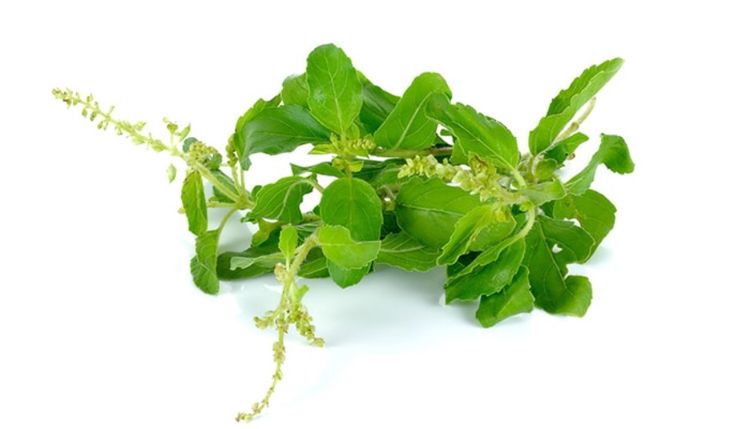BACKGROUND
Ingredient Type: Herb, Extract
Also Known As: Ocimum sanctum, Ocimum tenuiflorum, Tulsi

Holy Basil (Tulsi) is an aromatic plant native to India. It is cultivated for religious and medicinal purposes and is revered as an elixir for life. It is commonly used in Ayurvedic medicine and plays an important role within the Vaishnava tradition of Hinduism. It is considered to be an adaptogen, helping the body naturally adapt to stress (1).
Holy basil (Ocimum sanctum) is closely related to sweet basil (Ocimum basilicum), which is a staple of Italian and Asian cooking. Although both forms are native to India and Southeast Asia, they can, and often are, grown around the world.
Holy basil is mentioned in the Rig Veda, written in about 1500 BC, and its holiness is celebrated in the Puranas. It is highly regarded in the Ayurvedic system of medicine and is noted in medical treatises such as the Charaka Samhita written between 200 BC and 200 AD (4).
Some Christians also believe that holy basil was found growing near Christ’s tomb after the resurrection (4).
TRADITIONAL USES
Holy Basil is used in health supplements today, to help manage reactions to stress in the body.
Orally, holy basil has been used for the common cold, influenza (“the flu”), swine flu, diabetes, asthma, bronchitis, earache, headache, stomach upset, heart disease, fever, viral hepatitis, malaria, stress, and tuberculosis. Some have also used it for mercury poisoning, to promoted longevity, as a mosquito repellent, and as an antidote to snake and scorpion bites (2).
WHAT DOES SCIENCE TELL US?
Holy Basil Possibly Helps Support Healthy Blood Sugar Levels
Preliminary evidence suggests that a holy basil leaf extract might decrease fasting and postprandial blood glucose by 17.6% and 7.3% respectively in patients with type 2 diabetes. More evidence is needed to rate holy basil for this use (2).
SAFETY
Holy basil is considered safe when used orally and short-term. There is some evidence that holy basil extract can be used safely for up to 6 weeks (2,3).
REFERENCES
- Mondal, S., Mirdha, B. R., and Mahapatra, S. C. The science behind sacredness of Tulsi (Ocimum sanctum Linn.). Indian J Physiol Pharmacol. 2009;53(4):291-306
- Agrawal P, Rai V, Singh RB. Randomized placebo-controlled, single-blind trial of holy basil leaves in patients with noninsulin-dependent diabetes mellitus. Int J Clin Pharmacol Ther 1996;34:406-
- Saxena RC, Singh R, Kumar P, et al. Efficacy of an extract of Ocimum tenuiflorum (OciBest) in the management of general stress: a double-blind, placebo-controlled study. Evid Based Complement Alternat Med 2012;2012:894509. Epub 2011 Oct 3.
- https://naturalmedicines.therapeuticresearch.com
See the Examine.com entry for holy basil, the WebMD entry for holy basil, the RXList entry for holy basil, or the Michigan Medicine Health Library entry for holy basil for more information.









